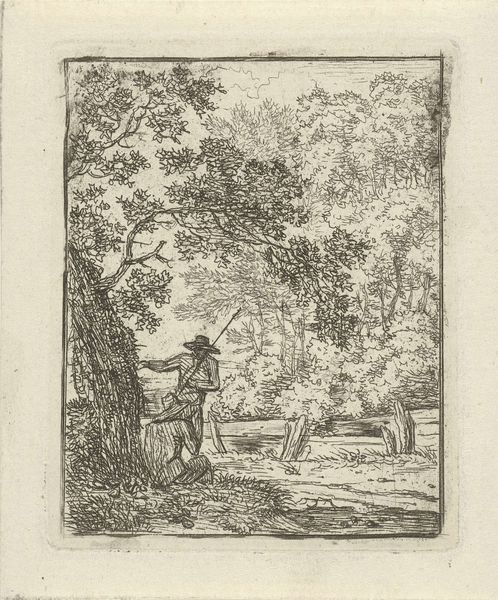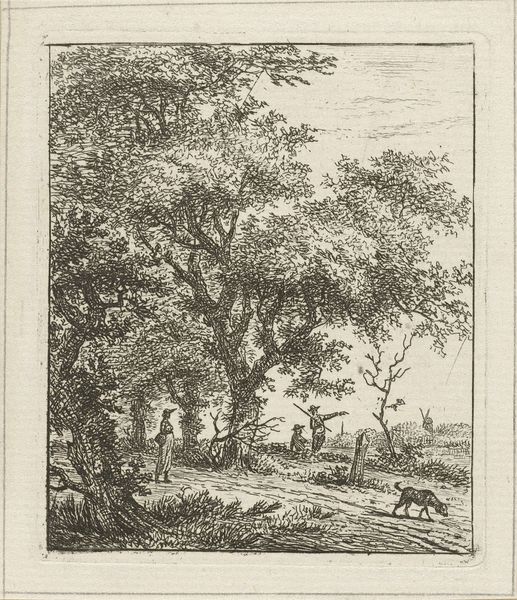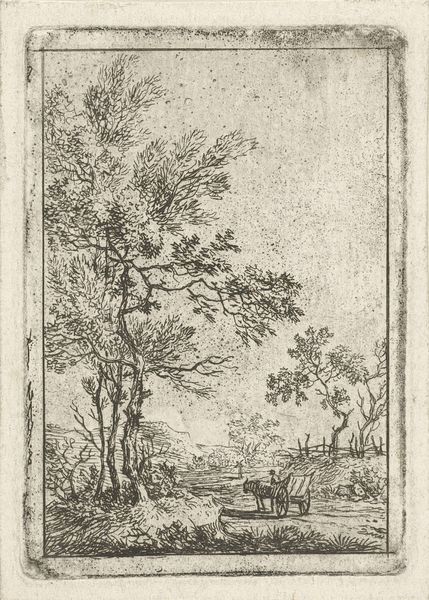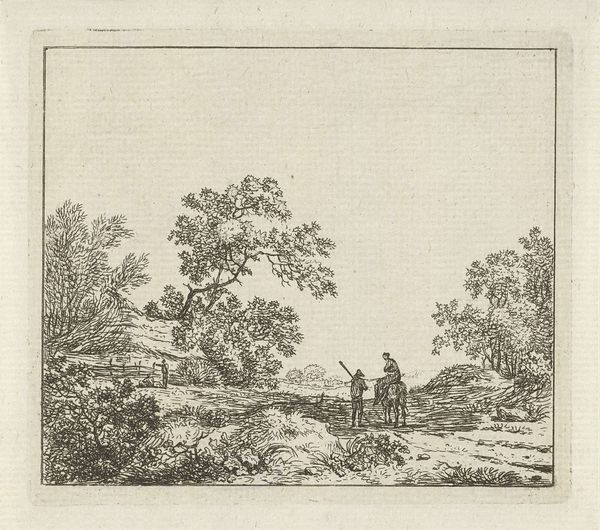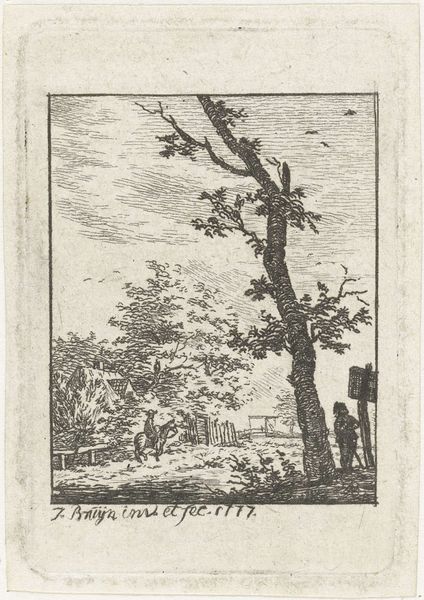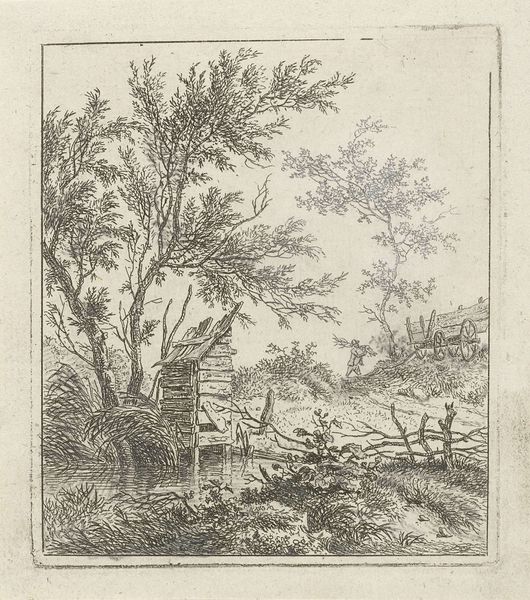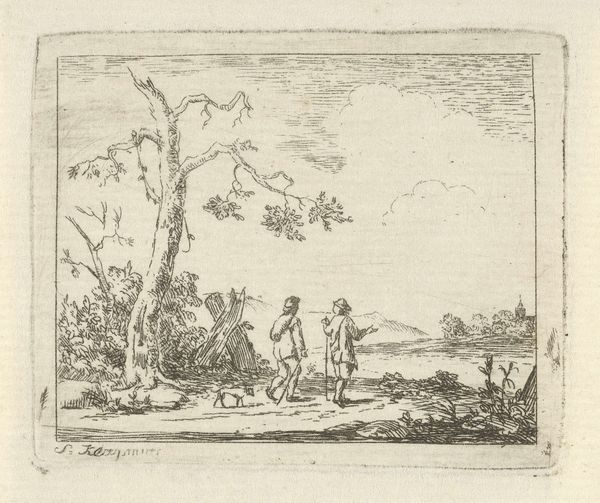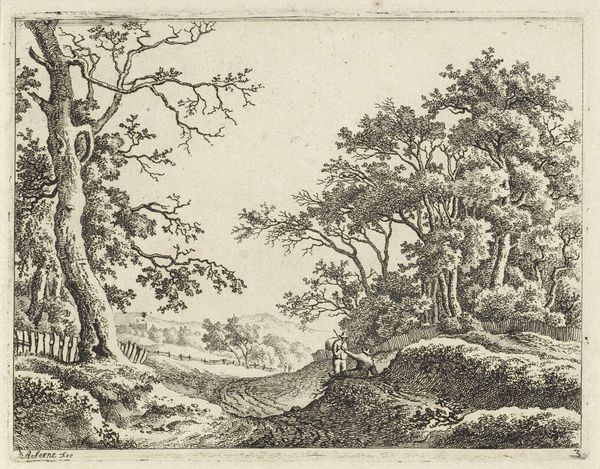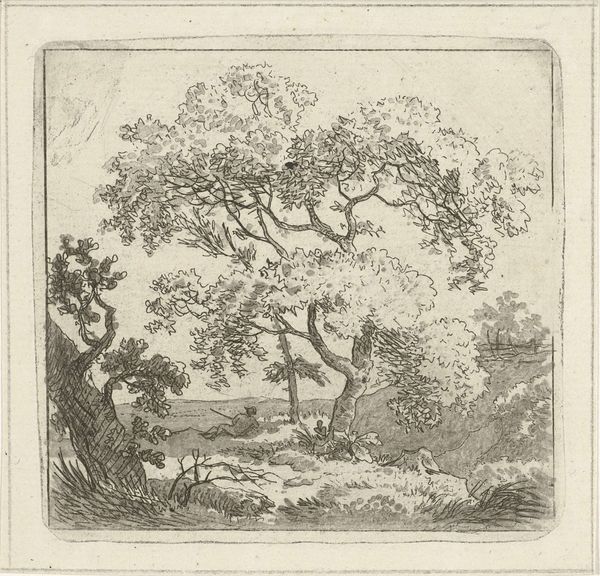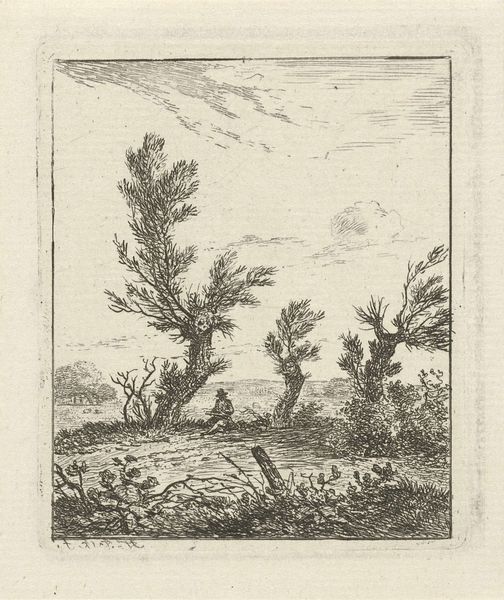
print, etching
#
mechanical pen drawing
# print
#
pen illustration
#
pen sketch
#
etching
#
pencil sketch
#
old engraving style
#
landscape
#
personal sketchbook
#
pen-ink sketch
#
pen work
#
sketchbook drawing
#
initial sketch
Dimensions: height 79 mm, width 65 mm
Copyright: Rijks Museum: Open Domain
Curator: What an interesting piece! Hermanus Fock's "Landschap met man met knapzak," made sometime between 1781 and 1822. It's an etching, currently held at the Rijksmuseum. What are your initial thoughts? Editor: It's striking how delicate the lines are. The figure with the knapsack seems almost lost in the vastness of the landscape, and there's a definite feeling of solitude about it. What do you see in this work? Curator: For me, it speaks to the socio-political landscape of the time. Think about the late 18th and early 19th centuries – a period of immense upheaval. This lone figure could represent the individual navigating societal shifts, the enclosure movement displacing people from common lands. What do you make of the path he’s on? Is it well-trodden or overgrown? Editor: It looks rather undefined, like he's forging his own way. Curator: Exactly! The etching could be interpreted as a metaphor for the search for individual agency within a rapidly changing world. His knapsack could be representative of all his worldly goods on his back. The work's scale, and the lone man are in tension here. Would you agree? Editor: Yes, definitely. The man is dwarfed by the landscape, but he also seems determined. This makes me wonder, what did it mean for an artist to represent landscape during a period of revolution? Curator: It’s about understanding power, and who controls it. Landscape wasn't just scenery; it was territory, resources, and a reflection of societal structures. Representing a lone traveler challenges the romantic ideal and possibly shows the artist acknowledging displacement and struggle. Editor: I hadn't considered the political implications of a landscape piece like this. Thank you, that was very insightful. Curator: Absolutely. Art reflects and shapes our understanding of history, identity, and power, doesn't it?
Comments
No comments
Be the first to comment and join the conversation on the ultimate creative platform.
